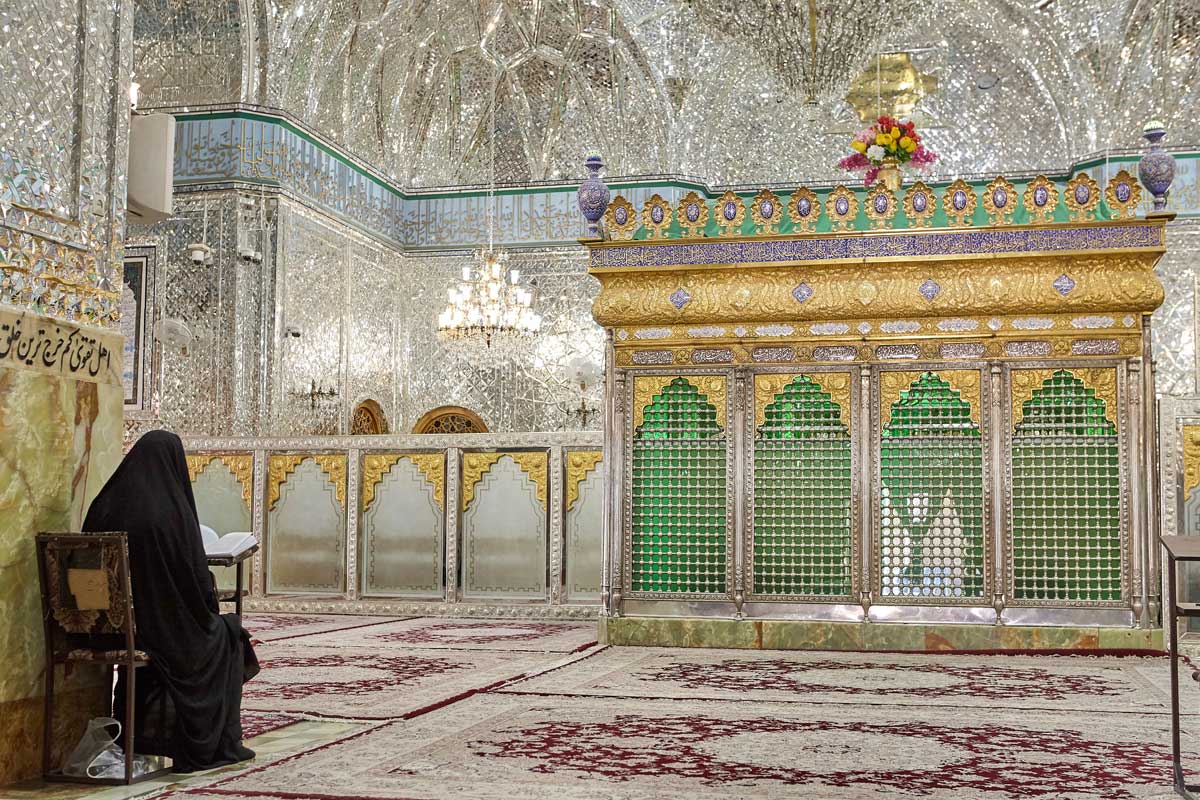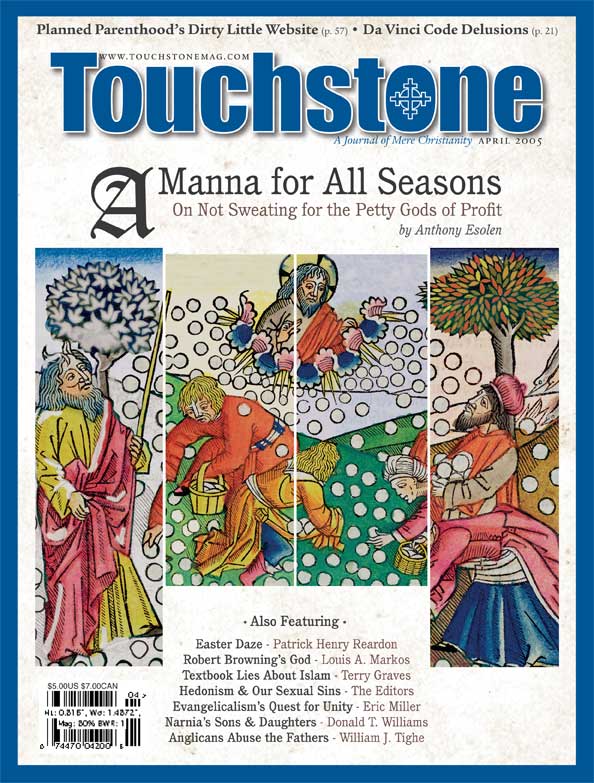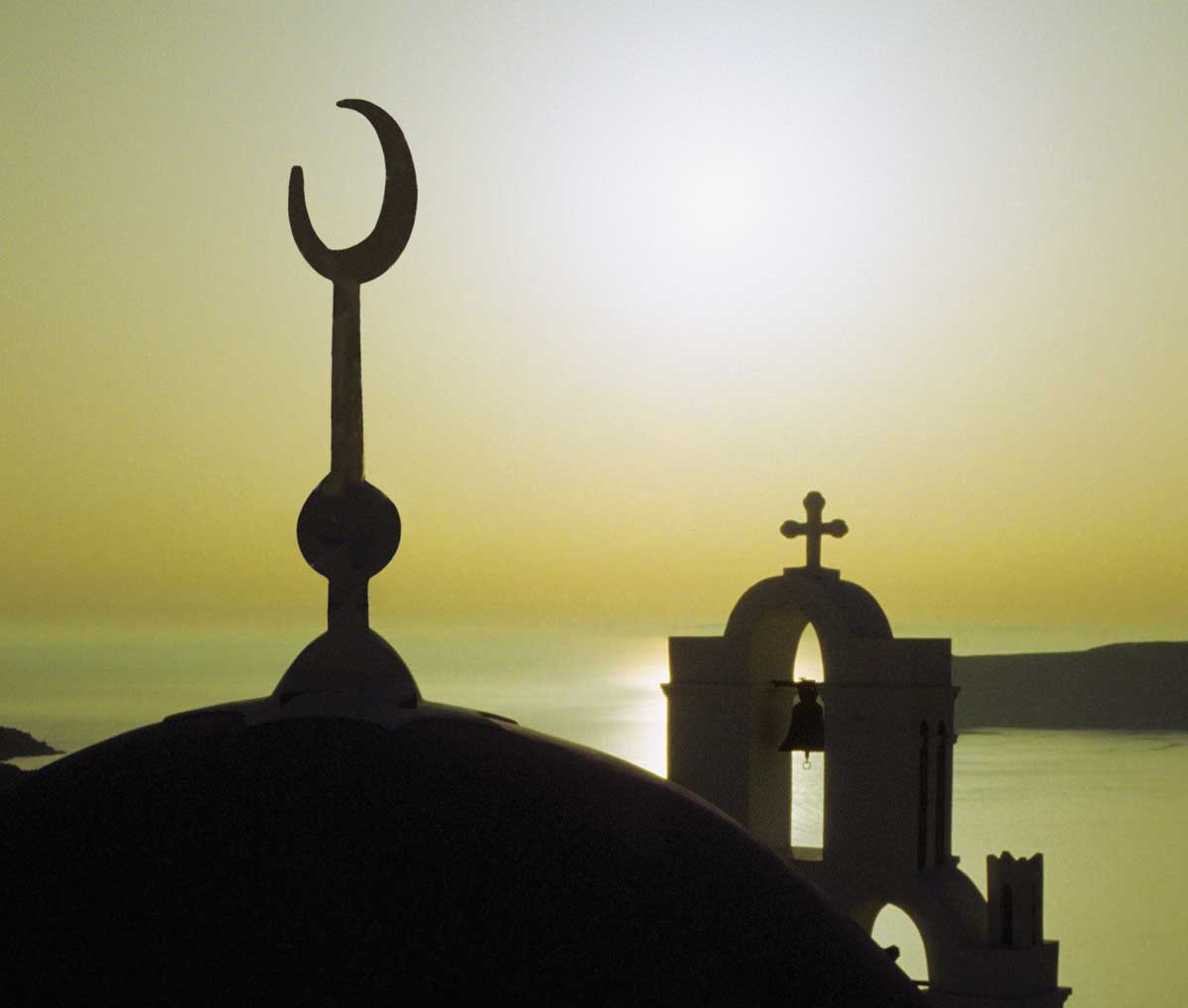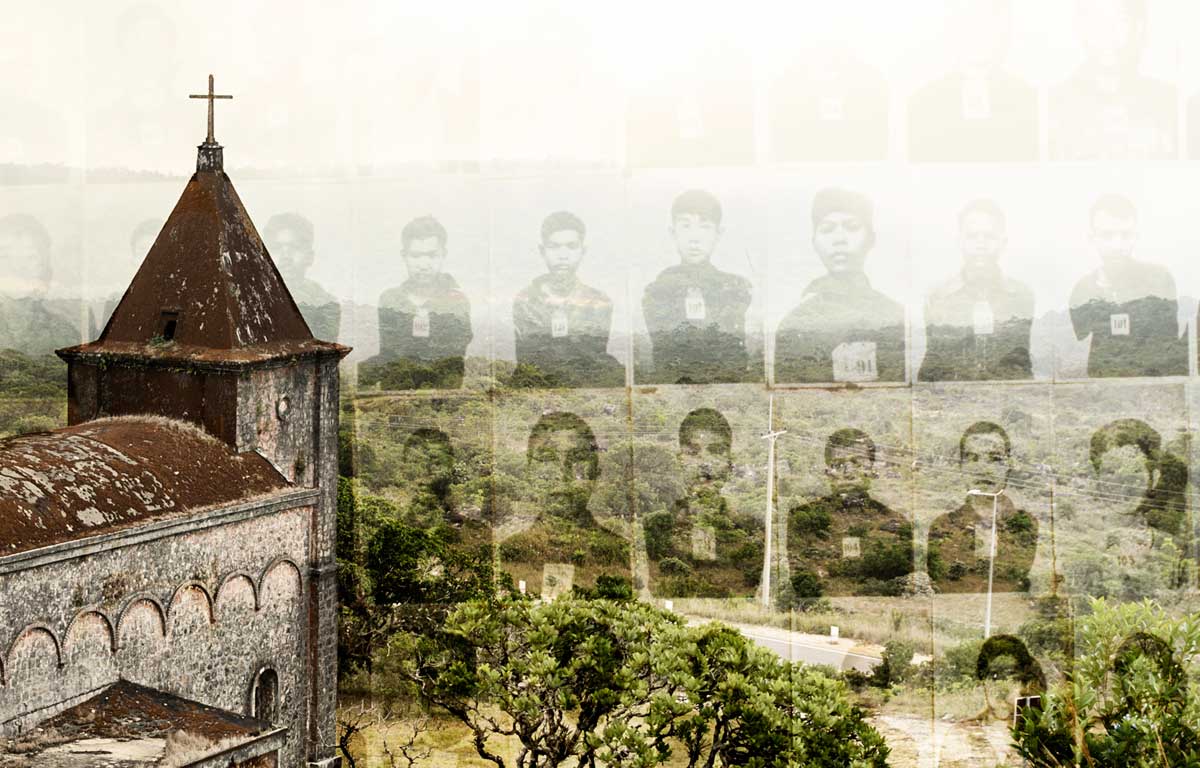Book Worms
Terry Graves on Textbook Publishers Who Lie About Islam
More than a century ago, A. W. Tuer chose this name for his guide to English-Portuguese conversation: English As She Is Spoke. I am reminded of this by a dispatch from the Associated Press (AP) about private schools whose curriculum had so many errors that outraged authorities in four states have acted to close them down. The schools, run by Daniel Gossai, target Hispanic immigrants and charge between $450 and $1,450 for a ten-week course.
According to California’s attorney general, the schools claimed the course “would lead to a valid diploma and help (students) get into college, find better jobs and get financial aid.” But its only teaching material was one slim volume, the AP went on, containing howlers such as:
1. The United States has 53 states but the “flag has not yet been updated to reflect the addition of the last three states”: Hawaii, Alaska, and Puerto Rico.
2. World War II began in 1938 and ended in 1942.
3. There are two houses of Congress: the Senate and the House, and “one is for Democrats and the other is for the Republicans, respectively.”
Public Islam
This is History As She Is Wrote! Here are more textbook stunners:
4. “Jihad has often been mistakenly translated simply as ‘holy war.’” It is “an effort in God’s service.” (In both historic and current usage it means war against infidels.)
5. The Archangel Gabriel revealed God’s word to the Prophet Muhammad.
6. The God Muhammad believed in—Allah—is the same God of other monotheistic religions, Judaism and Christianity. (Muslims deny the Trinity and the divinity of Jesus, and from the time of the Prophet have been warned against accepting Christians and Jews as friends or allies.)
7. “The shari’a guided the personal conduct of all Muslims . . . outlined the appropriate practices of Islamic government . . . [and] soon became one of the most important elements of the Muslims’ sense of identity.” ( Shari’a rigidly prescribes every aspect of public and private conduct and is backed up by harsh penalties, including mutilation and beheading.)
8. Muslims held Iberia for about 750 years, “a splendid era in Spain . . . a time of religious tolerance: Jews, Muslims and Christians lived together in harmony.” (Muslims held Iberia for only 350 years, and Jews and Christians were subjected to gross restrictions.)
9. The Crusades were characterized by bloodletting and looting, while Islam merely “spread rapidly.” (Muslims plundered and murdered as they conquered North Africa, the Middle East, India, and Iberia; the way “Islam spread rapidly” was by religious warfare.)
10. By the seventh century, Cordova [ sic], Spain, was an Islamic city, the Grand Mosque was already built, and the Crusades were in progress (all wrong by one to four centuries).
11. Adam built the Kaaba in Mecca, and jinns are made from fire and can be either good or evil.
12. God transported the Prophet Muhammad to Jerusalem, where he ascended from the Dome of the Rock to heaven upon the grand horse, Buraq. (Islamic lore holds that the Prophet died in 632, while construction of the Dome of the Rock did not begin until 685.)
Why be concerned about the Islamic dogma in the textbook used by Gossai’s private schools? Only the first three items are from that slim volume. All the others are from textbooks used by American public schools: Number 4 is from the nation’s most widely used world-history textbook, published by a division of Pearson; 5 and 6 are from other Pearson textbooks, and 6 also appears in a Houghton Mifflin text; and 7 is in a Harcourt text-book.
The well-known publishers just mentioned—which, along with McGraw-Hill, are called the “Big Four” by the American School Board Journal ( ASB Journal)—sell textbooks to American schools by the tens of millions. Numbers 8 and 9 are from an eleven-volume series from another famous house, Oxford University Press; California, among other states, has adopted that series. California also approved the book, from Interact, that contains items 10 through 12.
These are hardly the only examples where American textbooks give misleading or false information about Islam. Other examples are readily available from sources as disparate as the Protestant Educational Research Analysts, the moderate American Textbook Council (ATC), and William Bennetta’s combatively secular The Textbook Letter. These sources also provide dozens of examples about the textbooks’ teaching of history (Napoleon won the Battle of Waterloo, for example) and science (the equator passes through Texas and Florida).
Christianity Demeaned
Textbooks are often wrong, and often wildly so, but the most remarkable aspect of their errors is that so many favor Islam and demean Christianity and Western civilization. And have done so for years: Nearly all the examples cited above antedate 9/11, some by as many as ten years.
For instance, the second edition of Houghton Mifflin’s Across the Centuries, adopted by California for use throughout the state, appeared in 1999. In it, according to the scholar of Islam Daniel Pipes,
Everything Islamic is praised; every problem is swept under the rug. Students learn about Islam’s “great cultural flowering,” but nothing about the later centuries of statis [ sic] and decline. They read repeatedly about the Muslims’ broadmindedness (they “were extremely tolerant of those they conquered”) but not a word about their violence. . . .
The book also “endorses key articles of Islamic faith.” As Pipes notes, it treats as history the claim that
Ramadan is holy “because in this month Muhammad received his first message from Allah.” . . . And it declares that the architecture of a mosque in Spain allows Muslims “to feel Allah’s invisible presence.” Similarly, the founder of Islam is called “the prophet Muhammad,” implying acceptance of his mission. (School textbooks scrupulously avoid the term Jesus Christ in favor of Jesus of Nazareth.)
Ignorance and misinformation about history leave teachers and their students vulnerable to more error, and worse. And publishers are not the only parties wishing to exploit this vulnerability.
The Council on Islamic Education brags that three of the Big Four have let it proof their books. This helps explain why, in Across the Centuries, jihad “means ‘to struggle,’ to do one’s best to resist temptation and to overcome evil”; another Houghton Mifflin text never mentions “jihad” in its section on Islam. Prentice-Hall’s textbook relied on the same consultant—and contains much the same misinformation and lacunae. California adopted history books written by Joy Hakim—the author who wrote that Iberia was Muslim-held for 750 years and implied that Islam’s conquests were bloodless.
Worse yet is Interact’s Islam: A Simulation, the source of examples 11 through 13. Interact admitted that the Council on Islamic Education and another Islamic lobbying group helped write Simulation. Its website invites authors for its books, and apparently these two groups pounced on the invitation. In his review of Simulation, Pipes noted that it “sometimes lapses into referring to ‘we’ Muslims.”
It also requires that students take part in weeks of role-playing as, for example, “a Muslim warrior during the crusades or during an ancient jihad.” In “Another Burqa in the Wall,” Harpers magazine quoted this from Simulation’s instructions to teachers: “Stress that those students who do not dress [in Muslim garb] will not be allowed to actively participate and must sit at the back of the room.”
Try that with students who object to the Pledge of Allegiance! Even so, the American Civil Liberties Union (ACLU) did not sue California over the use of Simulation in its public schools, but two parents did. And lost: Federal judge Phyllis Hamilton found its use to be constitutional. (The same judge in another case opined that the pain an unborn baby feels during a partial-birth abortion is “ irrelevant.”)
Crucial Textbooks
Given the errors and bias in school textbooks, their dominating role in education in the United States is a disaster. A writer for the ASB Journal estimates that “between 80 and 90 percent of classroom and homework assignments are textbook-driven.” The Big Four “have swallowed other publishing companies . . . [and] established a de facto national curriculum.”
The ASB Journal reported another “facto” that tightens this stranglehold: Four states that pay for the textbooks they approve accounted for 29 percent of the $3.3 billion in US textbook sales in the most recent year for which sales figures are available. The ATC’s director said that a textbook’s selection by just one of the four states, Texas, “is the first step in becoming a bestseller.” Whoever controls the dominant textbooks controls what most students will learn about a given subject.
And not just public-school students: Harcourt boasts that for over 75 years, “virtually every public, private, and parochial school in the nation has confidently used [our] instructional materials.” Private schools likely rely on the same texts as their public-school neighbors.
The publishers cited are famous, long-established houses. Even Interact, around since 1969, is no Muslim front. Why, then, are these texts often so shoddy and biased? In a study for the Packard Foundation, John Hubisz wrote, “Publishers now employ more people to censor books for content that might offend any organized lobbying group, than they do to check the correctness of facts.”
Other factors exacerbate this problem: There is the all-too-human quest for novelty, for anything that might hold the limited attention spans of students (and teachers). As Joy Hakim—the author who rhapsodized about Spain’s “splendid era” after “Islam spread rapidly”—put it, “to find the story in a subject is to discover its essence. If we can train our students to pattern the world into stories we can turn them into powerful, analytical learners.”
Unchecked errors spread: The Boston Globe reported, “Some educators have traced the transmission of errors from one textbook to another and compare the process to the spread of a virus through a population.” This “virus” suggests textbook authors too rushed, lazy, or inept to research even reputable secondary sources. They settle for stealing from each other.
And get away with it: The same authorities (in California, for example) who threaten to prosecute Gossai for his alleged bilking of adult Hispanic immigrants out of thousands of their dollars are letting skate the publishers of textbooks so error-ridden and so biased in favor of Islam, as well as the people who used billions in tax money to inflict the books on our children. There have been no injunctions or arrests, no lawsuits by the ACLU, and no publishing-house executives doing perp walks for violating anyone’s civil rights. Nor has there been any action by the US Department of Education: Its huge website nowhere mentions textbook critics like Hubisz or Bennetta.
Ditto for the organization of those who select textbooks for public schools, the National Association of School Textbook Administrators. It shows little interest in textbook errors: The agenda for its 2004 meeting listed that topic as one of eleven to be covered in one three-hour session. Only one of the respective state reports from the last two years mentioned it, and then only in boilerplate language as something to avoid.
The Silence
Among the reasons there has been so little outcry is that most of those involved in buying the textbooks belong to powerful unions, and the president of the group selling them, the American Association of Publishers, is former congresswoman Patricia Schroeder. In the wildly improbable event that Schroeder is ever hauled before a Congressional committee to explain which kind of jinn, good or evil, told her about the Crusades of the seventh century, the grilling would start something like this: “So, Pat, how’re the grandkids?”
Forbes.com pointed out that publishers protect themselves in other ways, including large-scale lobbying and political contributions to those who purchase textbooks. One of its examples: “California’s superintendent of public instruction . . . sought and received campaign contributions from textbook publishers.” Paramount held “a glitzy fundraiser” for him when its textbook divisions were doing millions of dollars of business with the state.
Another reason for the silence may be that many teachers do not notice the errors or do not think them important. Bennetta argues, “The major schoolbook companies . . . have long recognized that the teacher corps in America includes some desperate dumbbells, and . . . [they] produce books that the dumbbells will like.” Alistair Fraser, a professor of meteorology whose websites expose bad science in textbooks, has bleakly concluded, “Apparently, most teachers believe everything they teach.”
For good reason: Cornell’s Donald Hayes wrote of his review of 788 textbooks used between 1860 and 1992, “Honors high school texts are no more difficult than an eighth grade reader was before World War II.” Over fifty years ago, Randall Jarrell grumbled that the textbooks of the 1930s were far easier than those from the nineteenth century! By now, our teachers, and their teachers, and their teachers, have been dragged through the same swamp of bad textbooks. They know not what they teach, and they know not that they know not.
Whatever the reasons so few complain about the textbook errors, the results of using such books are so predictable that “What Johnnie doesn’t know” stories are a staple of the major media. Even the US Department of Education reported that “more than half of [US] high-schoolers thought the US fought World War II in partnership with Germany, Japan, or Italy. Sixty-five percent couldn’t link the Boston Tea Party to the American Revolution.” And if the Department dared ask, it doubtless would find that a goodly percentage of our children believe that “Islam spread rapidly” and jihad means to “resist temptation.”
We should learn this from the selective prosecution of Mr. Gossai: Dupe a few people, and it’s a crime; dupe millions, and it’s educating the youth of America. Or, as the Archangel Gabriel revealed to Abraham Washington, for whom we get a day off in March, as they flew upon that grand horse, Buraq, across the Potomac to Cordova, “You can fool some of the people all of the time.”
For more information, see Educational Research Analysts (www.textbookreviews.org), The Textbook Letter (www.textbookleague.org), and the American Textbook Council (www.historytextbooks.org). Daniel Pipes’s articles can be found at www.danielpipes.org/article/118, and www.danielpipes.org/article/430.
Terry Graves is a freelance writer living near Pittsburgh. His novel, Rain in Hell, is about Original Sin, without, he hopes, being yet another effect of it.
subscription options
Order
Print/Online Subscription

Get six issues (one year) of Touchstone PLUS full online access including pdf downloads for only $39.95. That's only $3.34 per month!
Order
Online Only
Subscription

Get a one-year full-access subscription to the Touchstone online archives for only $19.95. That's only $1.66 per month!
bulk subscriptions
Order Touchstone subscriptions in bulk and save $10 per sub! Each subscription includes 6 issues of Touchstone plus full online access to touchstonemag.com—including archives, videos, and pdf downloads of recent issues for only $29.95 each! Great for churches or study groups.
Transactions will be processed on a secure server.
more on islam from the online archives
more from the online archives
calling all readers
Please Donate
"There are magazines worth reading but few worth saving . . . Touchstone is just such a magazine."
—Alice von Hildebrand
"Here we do not concede one square millimeter of territory to falsehood, folly, contemporary sentimentality, or fashion. We speak the truth, and let God be our judge. . . . Touchstone is the one committedly Christian conservative journal."
—Anthony Esolen, Touchstone senior editor












